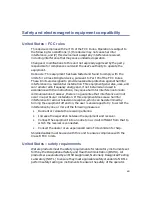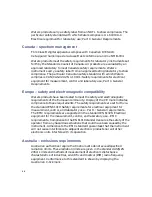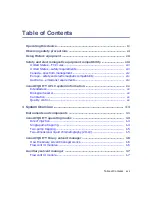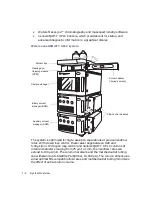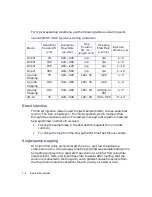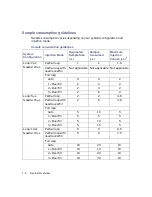
1-5
Two-pump trapping
With two-pump trapping, the sample manager loads the sample into the
sample loop. A dedicated trapping pump in the auxiliary solvent manager
(pump A) then loads the sample onto the trapping column. With the HTM
(heating and trapping module) valve in the waste position, unwanted solutes
flush through the trapping column and elute to waste while the column
retains the analytes. When trapping is finished, the valve then closes the
waste pathway and opens the flow path. Gradient elution proceeds as the
binary solvent manager pumps solvents through the trapping and analytical
columns and out to the detector or mass spectrometer.
Two-dimensional liquid chromatography (2D-LC)
2D-LC can separate and characterize complex biological compounds, for
example, as an adjunct to protein digestion and polyacrylamide gel
electrophoresis (PAGE) techniques.
Pump A of the auxiliary solvent manager serves as a sample loading pump,
injecting the sample onto an ion exchange column. Salt plugs of increasing
strength are prepared separately and injected from vials in the sample
manager, to elute various portions of the sample off the ion exchange column
and onto a trap column. At that point, separation and analysis proceeds as in
two-pump trapping.
Two-dimensional liquid chromatography can increase the amount of
information from complex proteomics samples, reducing their complexity and
dynamic range prior to mass spectrometry (MS) analysis.
•
To further improve the identification and increase the sequence
coverage of high and low abundance proteins from complex samples, the
system can perform fully automated online 2D-LC separations of
complex protein digest samples using an ion exchange column in the
first dimension and a reversed phase UPLC (nanoACQUITY columns
with BEH Technology™) in the second dimension.
•
For some of the most complex proteomics samples, off-line 2D-LC
separation using the CTC PAL MALDI Spotter/Fraction Collector is
available to minimize band broadening and thus preserve high peak
capacity nanoscale and capillary separations. To minimize sample
complexity and dynamic range, the CTC PAL™ microfraction collection
platform first collects discrete fractions from a gradient separation onto
MALDI targets or into microtiter plates for LC/electrospray ionization
(ESI) analysis, followed by MALDI or LC/ESI MS/MS analysis.
Summary of Contents for nanoACQUITY UPLC
Page 7: ...vii ...
Page 16: ...xvi ...
Page 20: ...xx Table of Contents ...
Page 32: ...1 12 System Overview ...



